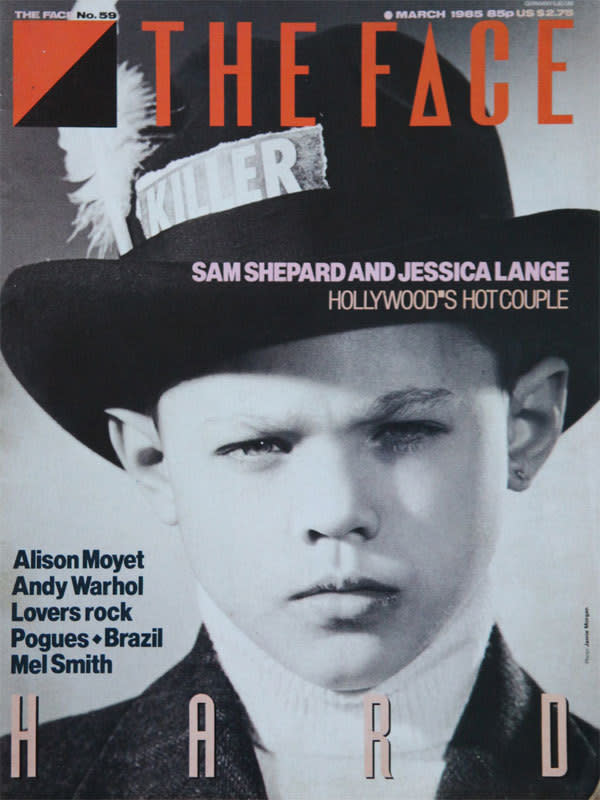TBT: Meet the Influential Stylist Who Invented the High-Low Mix
These days, stylists play a very public role in any celeb’s “glam squad,” and most fashion followers can name the stylists behind their favorite editorials. They’re praised for their ability to foresee trends, and can transform a celeb from “basic” into a bona fide style icon — not bad for a job that used to be very much in the background. But where did the visionary, famous-in-their-own right stylist come from? In some ways, it can be traced back to one man: Ray Petri, whose totally unique mix of high and low fashion, gender-neutral styling, and vernacular and avant-garde influences, still influences fashion today.
While England suffered through a crippling recession for most of the 1980’s under former Prime Minister Margaret Thatcher’s rule, sub-cultures like Punk, New Romantics, and Club Kids thrived, expressing their politicals and personal identities through outrageous, provocative, and often gender-bending music and style. But fashion magazines were out of touch with this cultural shift, with photo shoots depicting models on exotic vacations and having power lunches in designer clothing. It was into that void that, in 1980, the independently published The Face and i-D magazines were born, creating a much-needed platform for the outsider’s take on politics, music, and style.
One of those outsiders was Scottish-born Ray Petri. Petri grew up in Australia and Zimbabwe before moving to London and becoming a photo agent, often accompanying the young experimental photographers Jamie Morgan and Mark Lebon on fashion shoots. In the early ‘80s, there was no assigned stylist role on-set at fashion shoots. Instead, clothes usually brought by someone from the magazine whose responsibilities also involved providing lunch.
Petri, however, had a vision of style that went beyond designer clothing on the rack. He assembled a like-minded cohort of multicultural British immigrants consisting of photographers, musicians, models, and artists into a creative collective he called ‘Buffalo’ that would come to redefine the look of British style. “People tend to associate the word Buffalo with Bob Marley’s ‘Buffalo Soldier,'” Ray once said, “but in fact it’s a Caribbean expression to describe people who are rude boys or rebels. Not necessarily tough, but hard style taken from the street… a functional and stylish look; non-fashion with a hard attitude.”
Petri and Morgan approached The Face with their new ideas, and went on to create some of the most iconic images affiliated with the magazine to this day. Their aesthetic was style, not fashion. They made thrift store clothing look luxe, women look like powerfully-suited men, beautifully sculpted bodies wore underwear as outerwear, blankets became skirts on men, newspaper headlines were safety pinned on clothes, and bicycle shorts were paired with MA-1 Flight Jackets.
Calvin Klein’s notorious (and very successful) underwear campaigns and Madonna’s controversial gender-bending both followed in the spirit of Buffalo. Today, Louis Vuitton’s menswear stylist Kim Jones chose Buffalo affiliate Christopher Nemeth’s signature print in their last collection, and every other collection during Men’s Spring 2015 collection included an MA-1 Flight Jacket. Rihanna and MIA’s 90s-inflected streetwise style owes a debt to Neneh Cherry, who wrote the collective’s theme song, “Buffalo Stance.”
Ray Petri passed away in 1989 from HIV, too young and too soon to know the ways which Buffalo is still present amongst self-styled youths, and how central the visionary stylist would become in lending their creative vision to brands and celebrities.
Now, Buffalo members Jamie Morgan and Barry Kamen have combined forces with Dr. Marten’s, a brand Petri featured in many shoots, to oversee a “Spirit of Buffalo” collection debuting this week, as well as a short documentary about Buffalo’s history narrated by Neneh Cherry. The collection doesn’t disappoint: the collection of distressed steel-toe and padded construction boots hearken back to the “non-fashion with a hard attitude,” utilitarian look Petri championed, one that has carried musicians and Buffalo rebels through decades.










